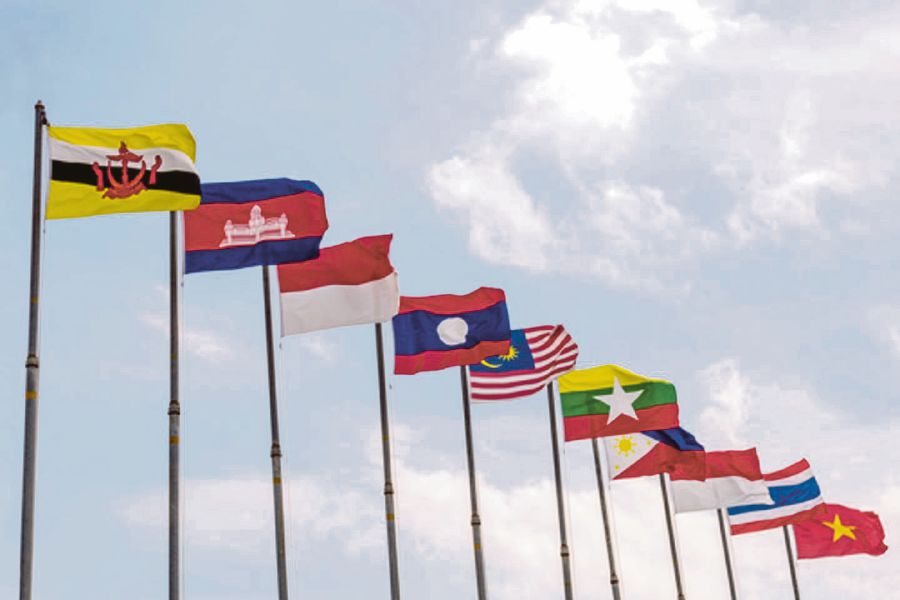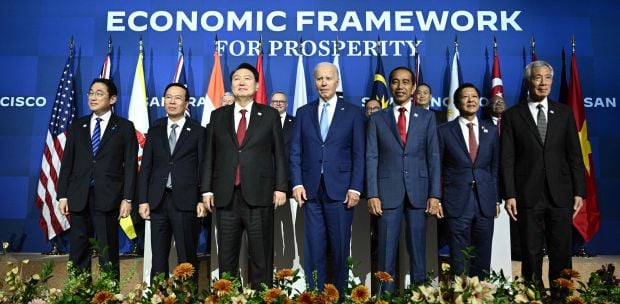The Indo-Pacific covers a vast region involving 24 countries with about 2.8 billion inhabitants and produces approximately US$30 trillion in goods and services a year.
The region flourished with diversity. The ocean of history, religion, culture and customs, languages, political setting, social economic wellbeing, cross-border exchange and the like is vast and deep.
Mesopotamia, Ancient Egypt, Ancient India and Ancient China were the four cradles of civilisation that developed independently four millennia ago.
Karl Jaspers said "the period between 600 and 300 BCE was the time of Confucius and Lao-Tse in China, of Buddha in India, of Zoroaster or his major disciples in Iran, of the prophets in Israel, and the philosophers in Greece. These were, to a very large extent, unknown to one another".
Meanwhile, the Silk Road — connecting continental Asia and Europe two millennia ago — facilitated the bondage between civilisations. Similarly, sea routes in the South China Sea, Malacca Straits and the Indian Ocean facilitated a wide spectrum of exchanges between China, Southeast Asia, India and West Asia from about 200 BCE.
The exchanges between ancient civilisations created distinct differences that are still influencing current relations.
The resemblance of Jews, Greeks and Romans caused the divide between similar groups of people and others in the West and the Middle Asia. Bernard Lewis rightly pointed out that the separation was by and large determined by ethnicity.
This dichotomy inevitably framed the mindset of the competitive, hostile style against each other. On the contrary, frequent exchanges between China and India at continental and maritime Southeast Asia induced the fusion of Chinese and Indian cultrues there.
The enhanced interaction created the tributary system of relations from Southeast Asian countries to China, producing resilient capacities for reconciliation and harmony.
Ancient and present-day China did not invade or conquer foreign territories except in the period of the Yuan Dynasty (the extension of the Mongol Empire).
Thus, the claim that China is an aggressive or offensive power is simply unfounded.
Ancient China and India civilisations did not invade other countries but had many wars within their own homelands, fighting for changes from one dynasty to another in search of a better one.
On the other hand, there were many wars in Mesopotamia and Ancient Egypt, between kingdoms in one civilisation and between empires from each civilisation, either for land or maritime power.
These historical facts differentiated two competitive views — competitive conflict style against others, and reconciliatory and harmonious style — separating behaviours of powers in international relations in the present days.
Today, the Indo-Pacific has become a place where 24 allies have joined forces against their alleged challenger, China, clearly an intention that is likely to ignite competitive confrontation.
The present approach of creating impediments under the guise of "Free and Open Indo-Pacific" is synonymous with the Containment Strategy during the Cold War.
It was effective to a certain extent. However, competitive conflict resolution, peacekeeping, peacemaking and peace building after the Cold War did not achieve the intended outcome. Humanitarian interventions in failed states, freedom and prosperity expounded by liberal democracies and capitalism have failed too.
The assertion of the Joe Biden administration that the rivalry between the US and China "is a battle between the utility of democracies in the 21st century and autocracies"— is conventional wisdom that adds fuel to fire. Concerted efforts, at least to suppress, if not to extinguish the flame, are crucial for peace, stability and prosperity in and beyond the region.
This is easier said than done. The journey to the land of peaceful coexistence in the vast ocean will always be confronted with rough seas and bad weather. And, Asean has a crucial role in navigating the journey to peaceful coexistence.
Unity in diversity is the identity of Asean, starting from its interactions with the Indian and Chinese civilisations, as well as Islam and Christianity. It is characterised with deep pluralistic distinctions.
That said, Asean with a remarkable pool of diversity is a trustworthy alliance to serve as the main navigator for guiding the post-Covid peaceful coexistence in the Indo-Pacific.
Malaysia, rich in pluralism, has a crucial role in working closely with thre member states of Asean in the proposed endeavour.
The writer is a professor at Reitaku University, Tokyo, and has been teaching Southeast Asian studies,
international economics, integration, development economics and Asian economy since 1983






